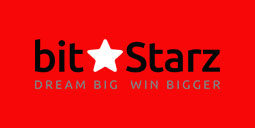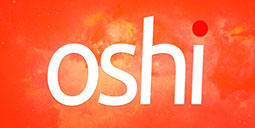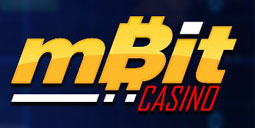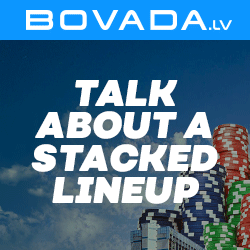Blockchain Must Prove to Build Trust on the Web of Things
Until we go into the realm of multiple overlapping ecosystems and complex non-linear, lively supply chains (consider: distributed manufacturing with more than a dozen subscribers to any Item published, each with unique IP, equipment, and certificates ), it’s hard to locate an economically compelling usage for truly decentralized ledgers.
Were each of these participants able to gain near real-time insight into our buy and its development from mill to front door, they might have the ability to collaborate to maximize multiple separate systems near real-time to get me exactly the exact merchandise as fast and in as good shape as you can — particularly if there are sudden downsides en route — a bicycle! — while preparing for their second order.
Ensuring that information is trusted is tough enough when a fundamental authority orchestrates device configuration, information collection and cleaning, and information dissemination. However, distributed networks can’t rely upon a central authority.
Camille Morhardt is currently the director of IoT plan at Intel.
Howeverthe competitive environment in which these incumbents operate in is quickly changing, with 3D-printing enabling distributed manufacturing, and barriers to entry around machine learning and other fast-developing technologies lowering. To contend, enterprises may be forced to adopt more open systems. The IoT business is inevitably expanding into more elaborate ecosystems. Consequently, we anticipate compelling use cases for blockchain will become more apparent.
Conventional means to maintain and verify participant identity and ethics neglect, because engaging Items are made by different manufacturers, operate different operating systems, speak with unique protocols, and also act on behalf of different owners who have different motives. The answer may well lie at the emerging technology which is called”blockchain.”
When we purchase an article of clothing on the internet, by way of example, we indirectly call , amongst others, a fashion designer, raw goods suppliers, logistics firms, customs, a distributor, an importer, a buyer, a stock management system, a customer management strategy, a bank, a web management system for product placement and pricing, a merchant, along with a last-mile delivery driver.
We often talk about a blockchain as a substitute for a trusted third party for interactions within a neighborhood; this is, the community ascribes to the blockchain supreme authority about”truth.” For applications built around a network of Things, however, the blockchain has to be situated within a much bigger context that incorporates institutional connections, legal needs, and regulatory management.
Tbelow are often no protected physical perimeters in which the raw sensing of the physical planet happens: on rooftops and space channels, interior mines and aircraft engines, on container ships and solar panels. Even border counterparts that include aggregate filter, normalize, and even more translate info, or send it into some cloud for extra analysis, tend to be mobile, have intermittent connectivity, and therefore are susceptible to shock, vibration, or extreme temperature.
While we will be trusting machines to make some decisions and take some actions within our behalves, businesses in IoT will constantly need to keep the ability to reverse or reverse the actions taken by a smart contract, because people are notoriously bad at contingency planning or future prediction, and the gear which will be acting on our behalves will also often be responsible for keeping us secure.
Recommendations
During the next couple of years we will likely find a growing number of pilots and small scale deployments utilizing the technology from sub-optimal usages, e.g. regular distribution chains with a dozen or so participants to improve speed of strength monitoring or provenance and reduction of disputes during audit — each of important improvements in IoT. In these early trials, ecosystem and industry leaders will want to establish price savings or incremental earnings.
Requirement two : Controlled access to information is critical.
We will then witness the growth of criteria that enable for cross-organizational device identity and setup, with ancient procedures for partitioning workloads throughout the variety of IoT devices, and shielding information or its meta-inputs via linked trusted execution engines or retention of encrypted states as information moves across edge, fog, and cloud nodes. Devices will form communities, exchange info, and provide us with options for actions based on their interactions.
Public blockchains such as Bitcoin typically provide a record of the trades on resources whereas anonymizing (or attempting to hide) the individuality of those doing the trades. For IoT applications, however, information becomes more complex than simple ownership of an advantage. Specifically, most information generated in the border is firmly qualitative; and once information becomes qualitative, its provenance — such as the identity and reputation of their origin — is critical. For example, a blockchain can accurately capture the transfer of access rights to some piece of information which asserts that a container has been sent across town. However, a blockchain is unable to maintain the credibility of the GPS readings recorded in the delivery document.
Blockchain — or distributed ledger technology generally — provides hope for expressing and establishing shared trust in information created and traded by Things: the immutable log of events that’s the blockchain provides a means to establish authoritatively the provenance of information; to document and enforce policies for obtaining the information; and also to act on the information through”smart contracts.”
There is a very real threat for all those deploying blockchain-based options for IoT to feel that the tamper-proof temperament of the blockchain supplies assurances regarding the ethics and trustworthiness of information (and about actions driven by this advice ).
Requirement 3: Performance issues.
A more realistic view is that the use of the blockchain transitions from a source of”shared truth” about the condition of a system into your log of”decisions and activities” which might have to be adjusted in the future.
Technology requirements
Frequently, some kind of outside recourse may audit and prescribe corrective trades that tackle these problems (although this suggests the existence of an outside authority). However, issues arise in which the information itself is problematic. For example, private information might leak into a trade; the impact of GDPR and other privacy laws may require that information be removed from the record. This problem is not unique to IoT applications though we anticipate it to become common in these.
Since Things increase their connectivity and intelligence, so too will our demand to allow them to form networks, exchange information, and coordinate actions on our behalves.
Precision and accuracy are limited by the physical capabilities of the Item . And information generated in the border is subject to various malicious attacks that are hard to detect. The messiness of information created (and consumed) by Things contributes to a degree of ambiguity and also non-determinism that struggles with blockchain technology. Consider, by way of example, a smart contract which adjusts the target speed of automobiles on a street based on measured traffic stream. Weather issues that affect the truth of the leak sensor might trigger adjustments in the target speed which are unintentional. A troublesome case might happen when automatic payments have been triggered when a delivery container arrives in a center. A flawed RFID reader could report the existence of a container that has not really arrived triggering an improper transfer of capital.
The border is messy.
For this point, the requirements we have discussed have been rather peripheral to the center of blockchain engineering, focusing on functionality and deployment characteristics; this particular one, nonetheless, reflects a fundamental shift in one of the fundamental tenets of the technology. Specifically, blockchain technology is based on the principle of immutability; once something is dedicated into the log it changes. This principle is particularly appropriate for the preservation of some record of unambiguous and deterministic events (for example, trades that represent the transfer of ownership of assets). Yet, data from the border is often messy.
Establishing confidence in the info shared among Things creates new demands for blockchain technology. Typically, blockchain technologies operate as an authority for both well-defined, deterministic systems. However, information created by Things stays outside the blockchain and is famously ambiguous and non-deterministic. Providing information confidence for qualitative information imposes new demands on the technology.
Network Growing via Shutterstock
Economic Requirements
Intermittent connectivity appears paradoxical into the Web of Things. Since Jacob Morgan described IoT at Forbes at 2014,”Simply putthis is the concept of basically connecting any device with an off and on switch into the Web (or to every other).” Even the IoT community invested a great deal of time espousing pervasive connectivity and a reduction in transmission and storage costs; nevertheless we now confidently make tradeoffs between connectivity and battery life, connectivity and transmission cost, connectivity and infrastructure price. There are many, many advantage nodes which by design receive or send information just intermittently and in smallish quantities. Essentially, the very same forces which drive autonomous interaction into the border also need blockchains to adapt connectivity limitations.
Finally, we will likely see commensuration of information generated in the border — not just around sovereign Things or organizations, but over autonomous ecosystems. At this point that the blockchain will be more efficient than centralized systems in handling the intricacies of socio-cultural distribution chains, managing individuality, provenance, shared information sets, and conducting smart contracts.
Purists from the cryptocurrency planet will argue that a”permissioned blockchain” is an oxymoronnonetheless, some kind of identity verification is necessary for participants who join the network in order that they could trust the information that the Item contributes to the collective. This demand has led to the creation of personal, permissioned, closed, and business blockchains — most of versions on the theme of limited participation from the distributed network. There is another possibility which Things may be identified or otherwise certified to contribute advice to an otherwise public blockchain — any sort of hybrid design that attempts to validate input but not confine inputters. Other potential solutions involve the usage of anonymous qualifications and verifiable claims.
Requirement 5: Activities must be reversible.
Single powerful buyers orchestrate ecosystems round a distribution chain since they accrue revenue by doing so. Distributed collaboration contributes to distributed value, so there is not much incentive for any single, hierarchical thing to prepare the infrastructure to disperse orchestration. Blockchains are uniquely appropriate to micro-transactions, so scale may help solve this issue. The IoT community has found several subscription models and non profit models. However, until there emerges a transparent, repeatable, persuasive business model, adoption of blockchains to get IoT will be slow.
The leader in blockchain news, CoinDesk is a media outlet that strives for the greatest journalistic standards and abides by a strict set of editorial policies. CoinDesk has been an independent operating subsidiary of Digital Currency Group, which excels in cryptocurrencies and blockchain startups.
However, despite the fact that there is enormous promise, blockchain technology must evolve substantially to fulfill IoT’s special needs. The special features of IoT programs impose both technical and financial requirements which guide us to conclude which IoT programs must be situated within an economical, legal and regulatory context that extends beyond the blockchain. Specifically, whereas traditional blockchain applications ascribe all authority to the blockchain, we believe IoT applications must achieve a balance of authority.
Yet the creation of those networks is rife with problems. In the best case, information collected, shared, and acted upon is more inconsistent in quality and availability. At the worst case, it supplies a wholly new attack vector for malicious participants. When Things program and act on our behalveswe need confidence that the information they use to make decisions is trusted.
Another core principle of blockchain is redundant compute and storage: every participant processes all trades and maintains the ledger, creating an ever-growing demand for storage throughout the network. In IoT, in which lightweight nodes in the border often have extremely limited storage and compute power (since their main objective is to feel raw information as efficiently as possible), IoT blockchains will likely should comprehend the assortment of nodes from the network and their relative capacities. The blockchain itself might want to orchestrate which customers behave as lightweight nodes, and then behave as validators. Further, We’re likely to see a growing number of consensus mechanisms That Don’t require Large amounts of computing power or technical components, and are thus easier to scale or operate on existing installed gear. (Note, too, that although redundancy is often regarded as a characteristic for blockchain ethics, one which increases the cost to some malicious performer that tries to break network consensus and introduce fraudulent transactions, it also concurrently reduces confidentiality risks. Ledger replication delivers a wide surface area for individuals looking for entry to individual nodes’ sensitive information.)
Past the technical requirements are easy financial barriers to blockchain adoption in IoT. Enterprises are familiar with centralized systems and from traditional, linear supply chains, so they function nicely. Whenever there is a strong buyer at the same end of a distribution chain, there is no motive for this entity to simply set up a distributed database (that it manages centrally) and need all sellers participating in its distribution chain to input their information into it.
Ordinarily, blockchain trades are clear. The introduction of intelligent contracts which codify and execute detailed agreements between participants complicates this thought. Firms don’t like to share private information with competitors. Intelligent contracts are strong instruments in IoT, especially in supply chains which have third party logistics firms. It is quite common for disputes to appear in handoff points in which there is movement of custody of the asset. The capacity to show that the temperature of the container stayed within contract parameters must allow immediate trigger of payment. Or proof that the good spoiled under celebration eight custody at a twelve-party supply chain that all participants could see will quickly fix finger pointing. And this evidence has to be assembled without showing additional confidential info. For example, if an organization is accumulating forecasts on produce that has been in that container, then the organization may not need all bidders to observe every bidding or to understand the last selling price. In general, the information shared through trades is subject to some potentially intricate set of access policies.
Requirement 1: Identity and standing of participants is essential to trust and has to be vulnerable.
And the advantage, where billions of interacting devices which will form the Internet of Things will probably live, is where IoT information is created and relied upon.
Requirement 4: Connectivity is intermittent; action has to be taken when sprinkled.
Blockchain Must Prove on the Internet of Things to Build Trust - April 2024
EXPERTLY REVIEWED
MOBILE FRIENDLY
FAST PAYOUTS
- CasinoRatingBonusVisit Casino
Get your 100% Match Bonus up to $1000!
200% match bonus up to 2000
Up to 5 BTC
100% match bonus + 180 free spins
Get up to 1 BTC on First Deposit!
Welcome bonus up to 1.5BTC + 250 free spins
Get your 5 BTC Welcome Bonus
Top Rated
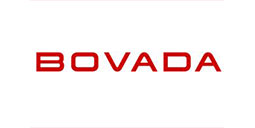
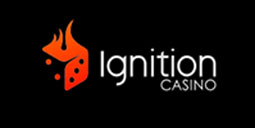
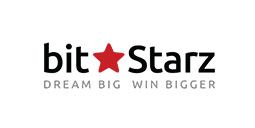
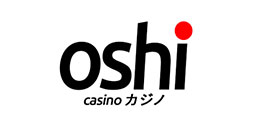
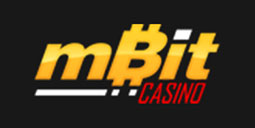
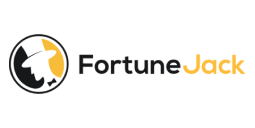
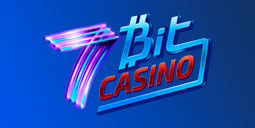
Search
Casino List
- Bovada Casino
- 7bit Casino
- Bitstarz Casino
- Sun Palace Casino
- Ignition Casino
- Tangiers Casino
- Nitrogen Sports Casino
- Casumo Casino
- Fortunejack Casino
- Mars Casino
- Mbit Casino
- Cafe Casino
- Drake Casino
- Grand Fortune Casino
- CryptoReels Casino
- Wild Casino
- Betchain Casino
- Oshi Casino
- Bitcoin Penguin Casino
- Joe Fortune Casino
- Vegas Casino.io


